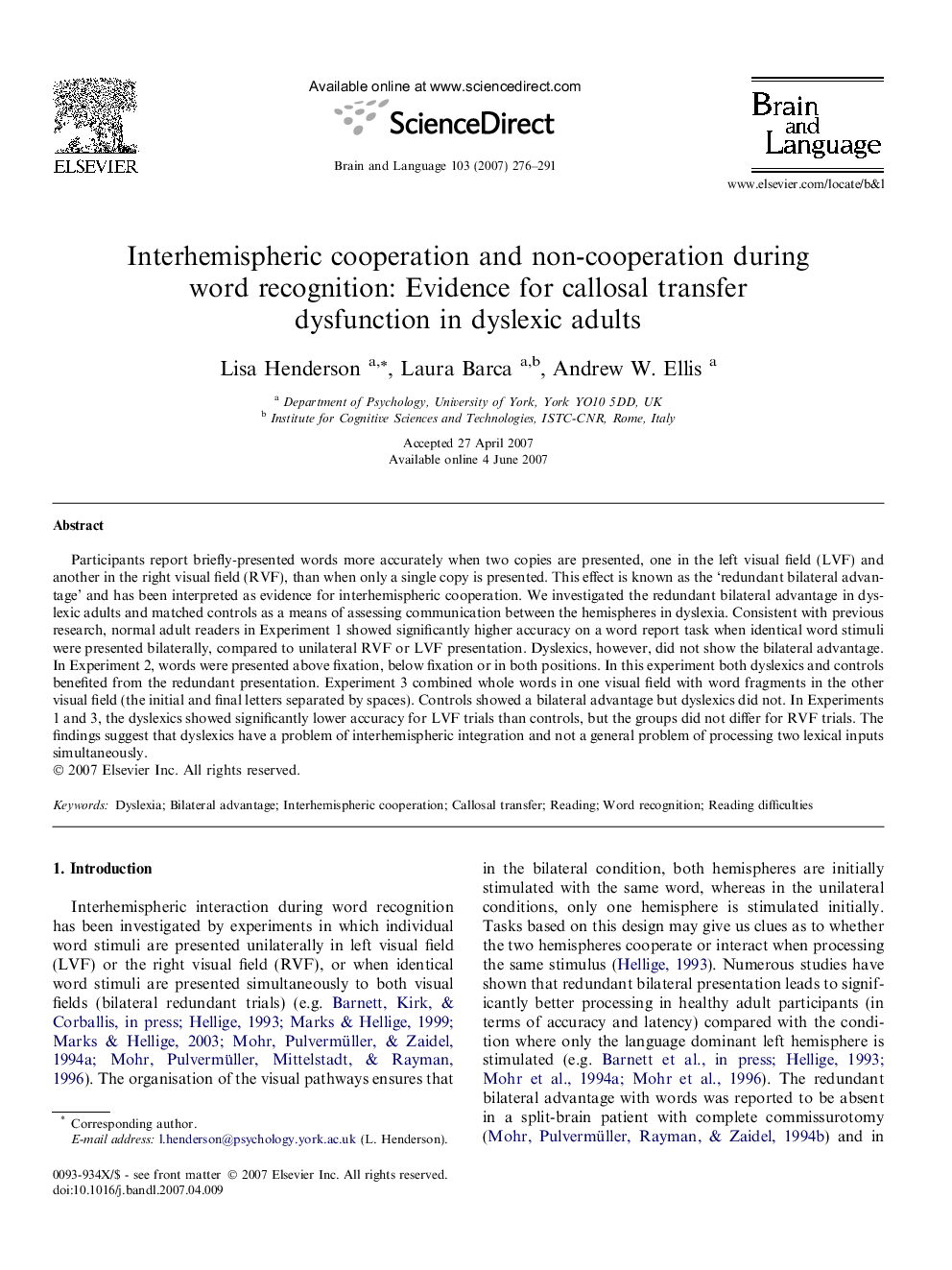| کد مقاله | کد نشریه | سال انتشار | مقاله انگلیسی | نسخه تمام متن |
|---|---|---|---|---|
| 925779 | 921534 | 2007 | 16 صفحه PDF | دانلود رایگان |

Participants report briefly-presented words more accurately when two copies are presented, one in the left visual field (LVF) and another in the right visual field (RVF), than when only a single copy is presented. This effect is known as the ‘redundant bilateral advantage’ and has been interpreted as evidence for interhemispheric cooperation. We investigated the redundant bilateral advantage in dyslexic adults and matched controls as a means of assessing communication between the hemispheres in dyslexia. Consistent with previous research, normal adult readers in Experiment 1 showed significantly higher accuracy on a word report task when identical word stimuli were presented bilaterally, compared to unilateral RVF or LVF presentation. Dyslexics, however, did not show the bilateral advantage. In Experiment 2, words were presented above fixation, below fixation or in both positions. In this experiment both dyslexics and controls benefited from the redundant presentation. Experiment 3 combined whole words in one visual field with word fragments in the other visual field (the initial and final letters separated by spaces). Controls showed a bilateral advantage but dyslexics did not. In Experiments 1 and 3, the dyslexics showed significantly lower accuracy for LVF trials than controls, but the groups did not differ for RVF trials. The findings suggest that dyslexics have a problem of interhemispheric integration and not a general problem of processing two lexical inputs simultaneously.
Journal: Brain and Language - Volume 103, Issue 3, December 2007, Pages 276–291